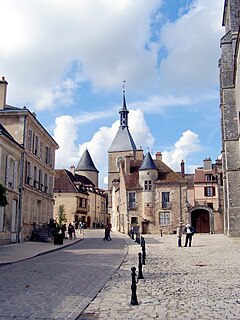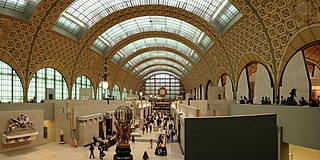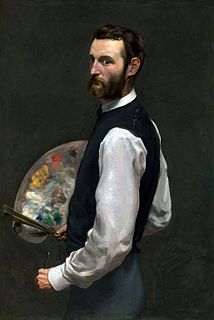
Jean Frédéric Bazille was a French Impressionist painter. Many of Bazille's major works are examples of figure painting in which he placed the subject figure within a landscape painted en plein air.

Jean-Henri Riesener was the French royal ébéniste, working in Paris, whose work exemplified the early neoclassical "Louis XVI style".
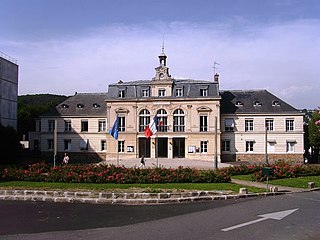
Orsay is a commune in the Essonne department in Île-de-France in northern France. It is located in the southwestern suburbs of Paris, France, 20.7 km (12.9 mi) from the centre of Paris.

The Petit Trianon, built between 1762 and 1768 during the reign of Louis XV of France, is a small château located on the grounds of the Palace of Versailles in Versailles, France. The park of the Grand Trianon includes the Petit Trianon.

Byōbu are Japanese folding screens made from several joined panels, bearing decorative painting and calligraphy, used to separate interiors and enclose private spaces, among other uses.
Camille Le Tallec has preserved and created in its studio more than 375 Limoges porcelain decorative patterns signed by the Le Tallec's marks. There were realized in the French technical tradition of the 18th and 19th centuries, developed for the Sèvres porcelain. From 1961, some of the Le Tallec's patterns were especially created for Tiffany & Co and by 1990 when the studio was acquired by the jewelry and silverware company an extensive new creation process had then been engaged.

Jean-Michel Othoniel is a contemporary artist born in 1964 in Saint-Etienne (France). He lives and works in Paris.

The Île de la Jatte or Île de la Grande Jatte is an island in the river Seine, located in the department of Hauts-de-Seine, and shared between the two communes of Neuilly-sur-Seine and Levallois. It is situated at the very gates of Paris, being 7 km distant from the towers of Notre Dame and 3 km from the Place de l'Étoile. The island is nearly 2 km long and almost 200 m wide at its widest point, and has about 4,000 inhabitants. Its name translates as "Island of the Bowl" or "Island of the Big Bowl".
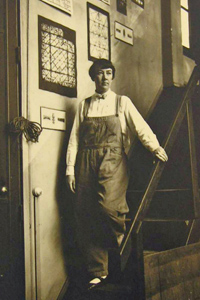
Marguerite Huré (1895–1967) was a French stained glass artist who introduced abstraction into French religious glassmaking.

Albert Lebourg, birth name Albert-Marie Lebourg, also called Albert-Charles Lebourg and Charles Albert Lebourg, was a French Impressionist and Post-Impressionist landscape painter of the Rouen School. Member of the Société des Artistes Français, he actively worked in a luminous Impressionist style, creating more than 2,000 landscapes during his lifetime. The artist was represented by Galerie Mancini in Paris in 1896, in 1899 and 1910 by : Galerie Bernheim-Jeune, 1903 and 1906 at the Galerie Paul Rosenberg, and 1918 and 1923 at Galerie Georges Petit.

Paul Biva was a French painter. His paintings, both Realist, Naturalist in effect, principally represented intricate landscape paintings or elaborate flower settings, much as the work of his older brother, the artist Henri Biva (1848–1929). Paul Biva was a distinguished member of National Horticultural Society of France from 1898 until his untimely death two years later.
Gustave Louis Jaulmes was an eclectic French artist who followed the neoclassical trend in the Art Deco movement. He created monumental frescoes, paintings, posters, illustrations, cartoons for tapestries and carpets and decorations for objects such as enamels, sets of plates and furniture.
Laurence des Cars is a French general curator of heritage and art historian, current director at the Musée d'Orsay and Musée de l'Orangerie.

Thomas William Marshall was an English post-impressionist painter and water colorist, born on October 28, 1875 at Donisthorpe in England. He passed away on September 14, 1914 in Paris.





